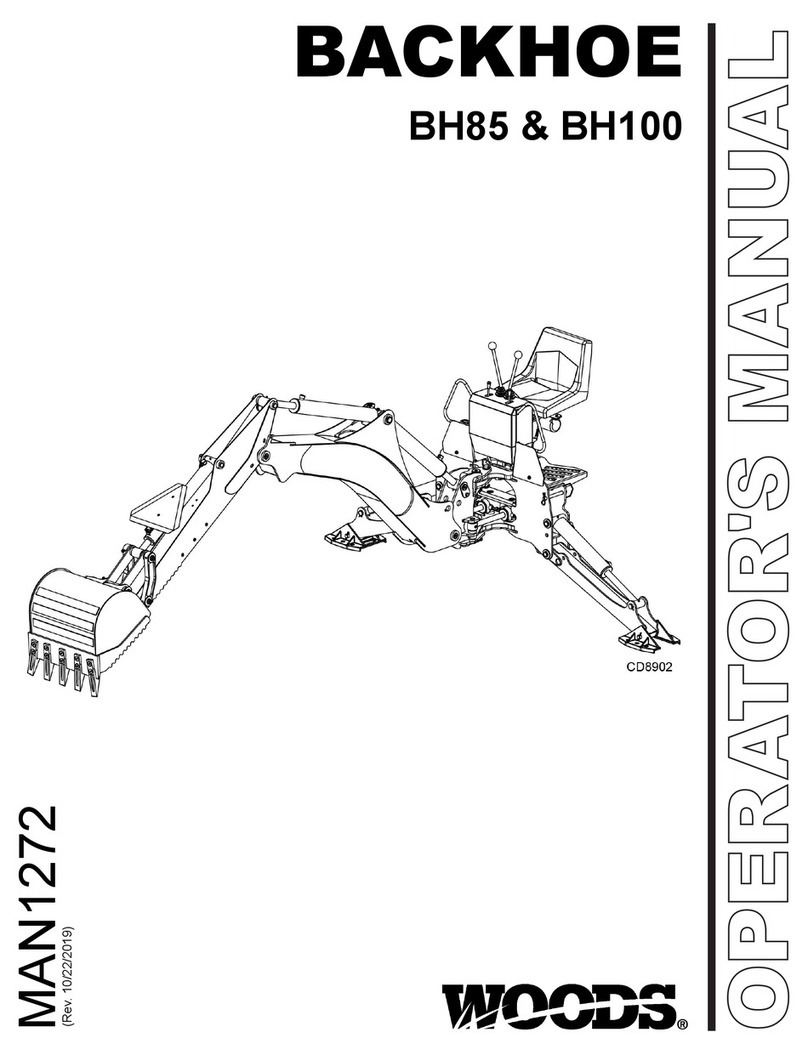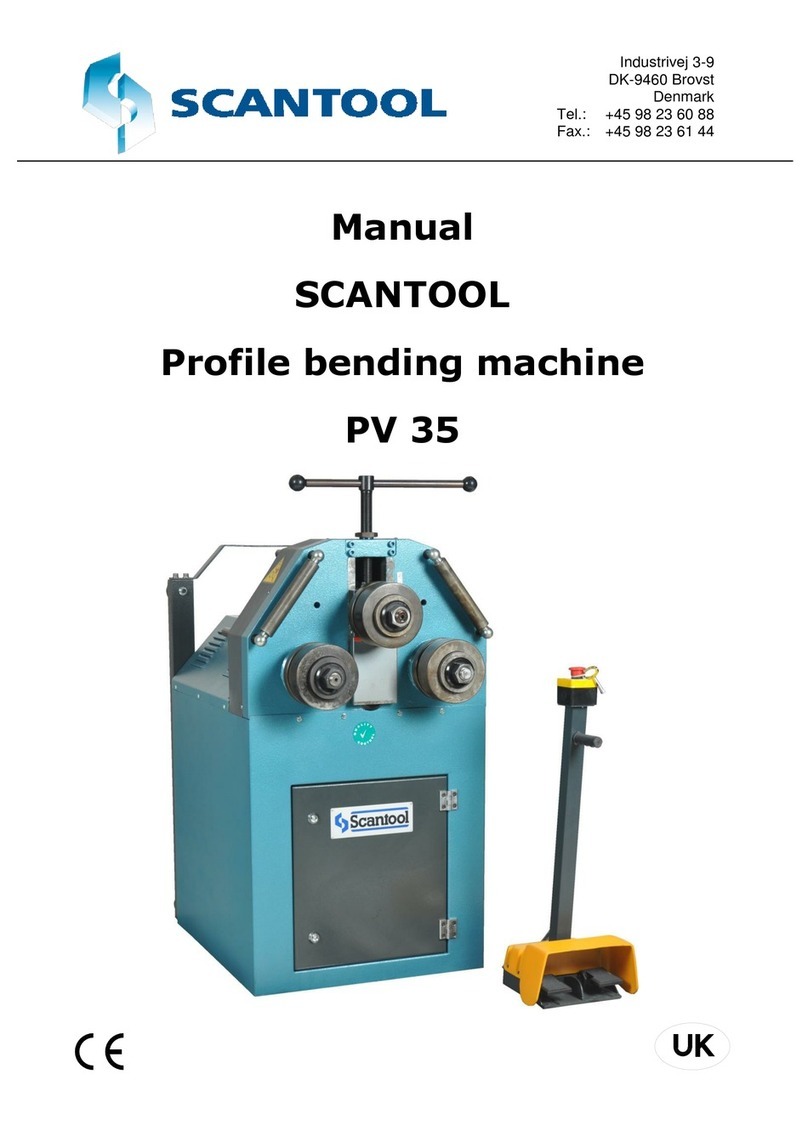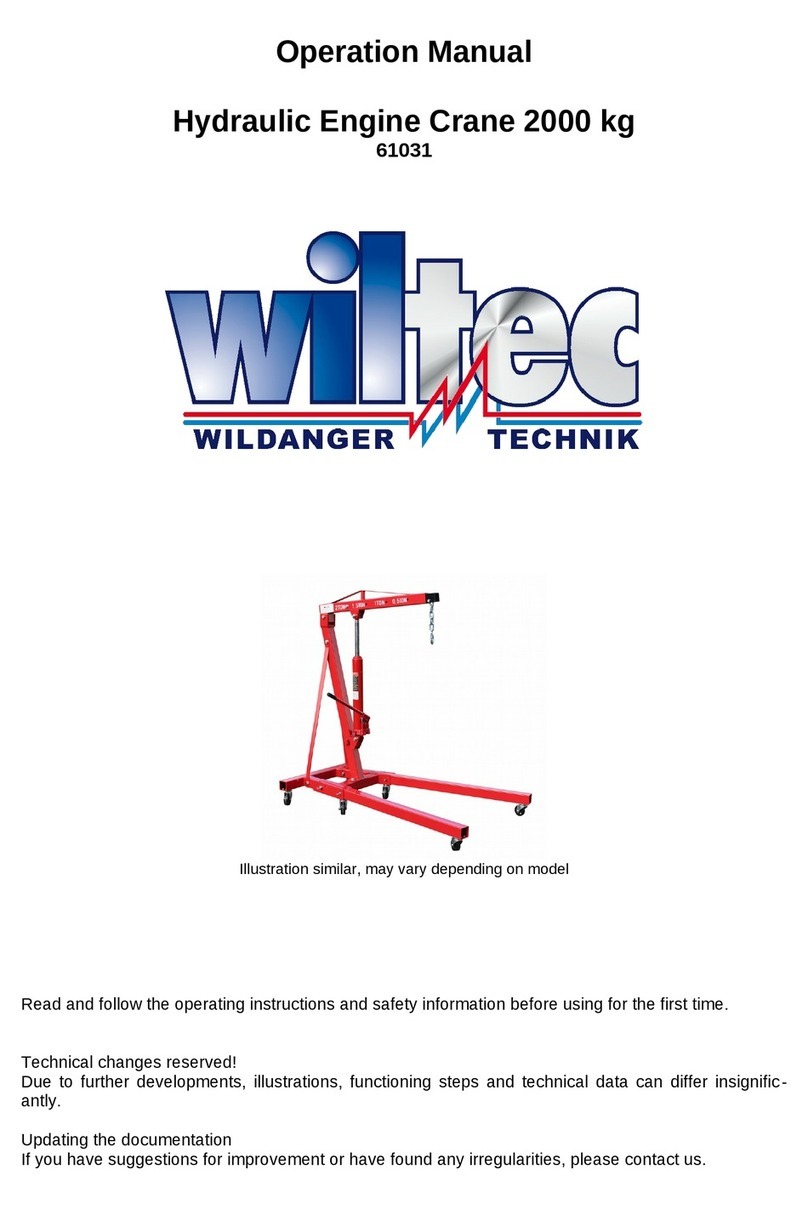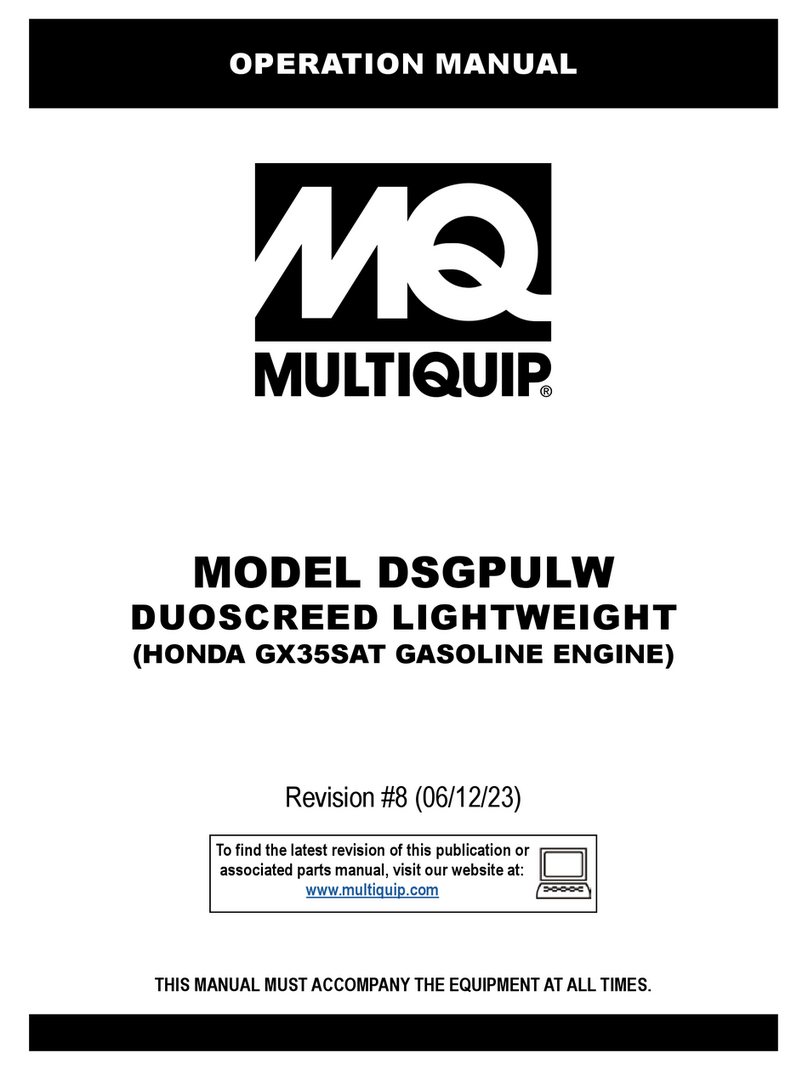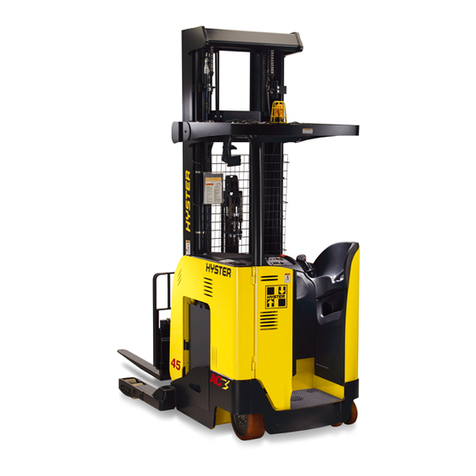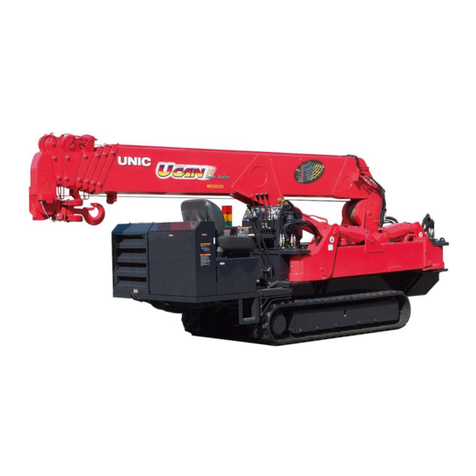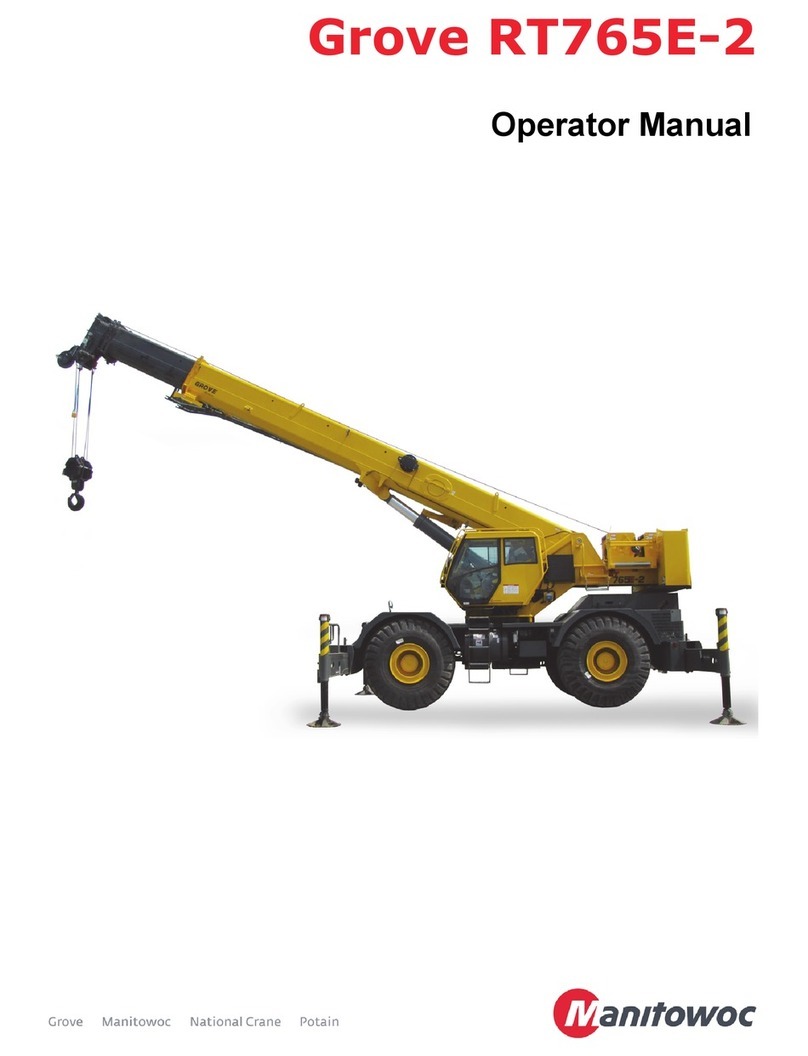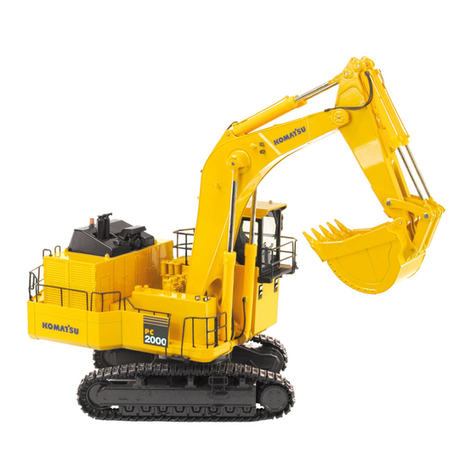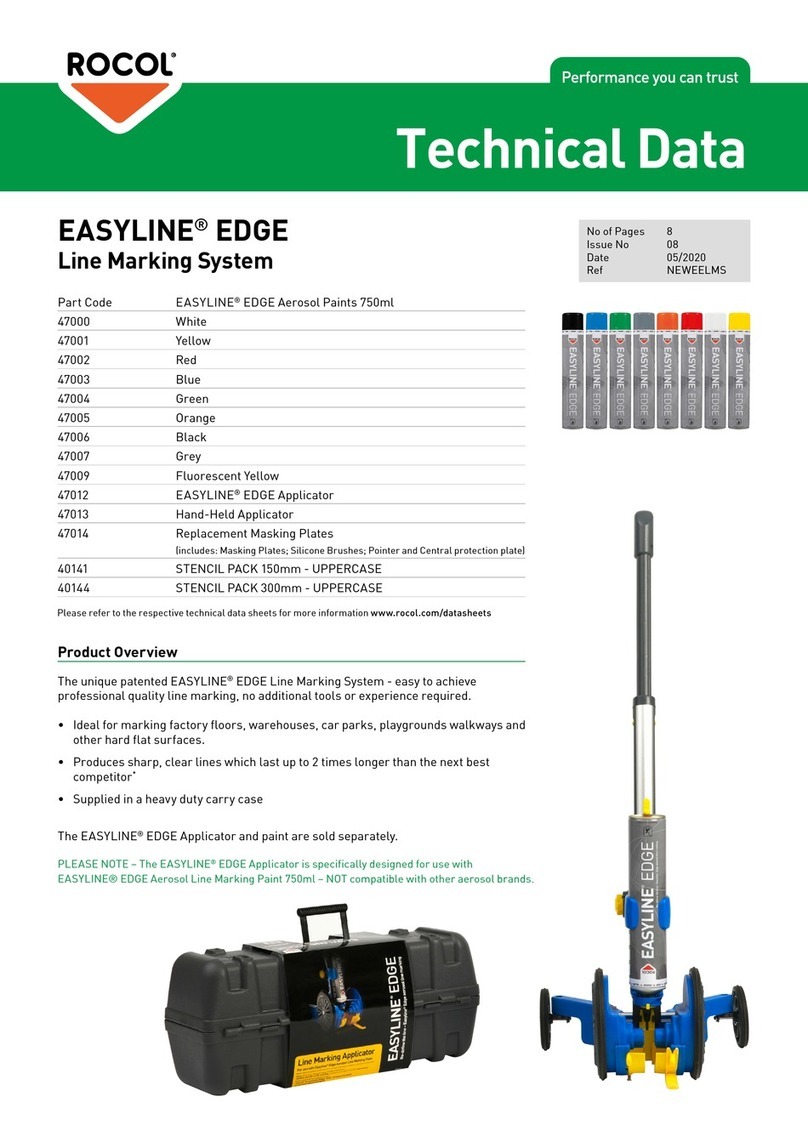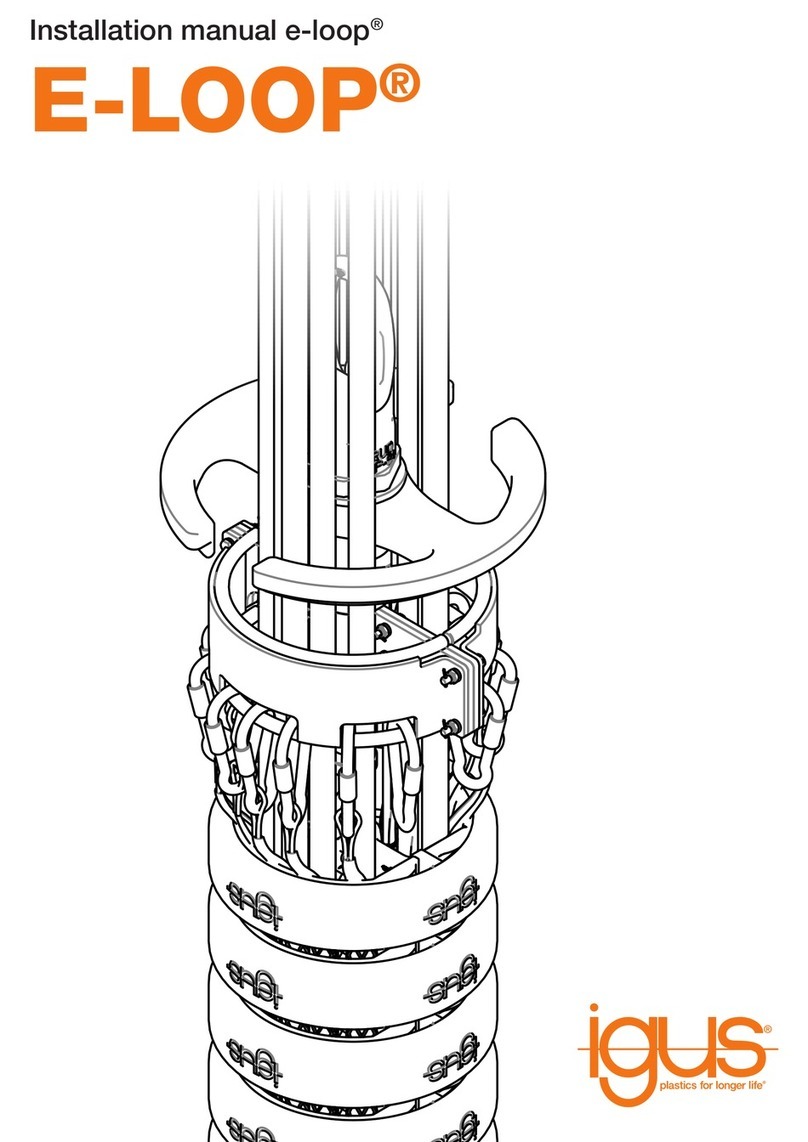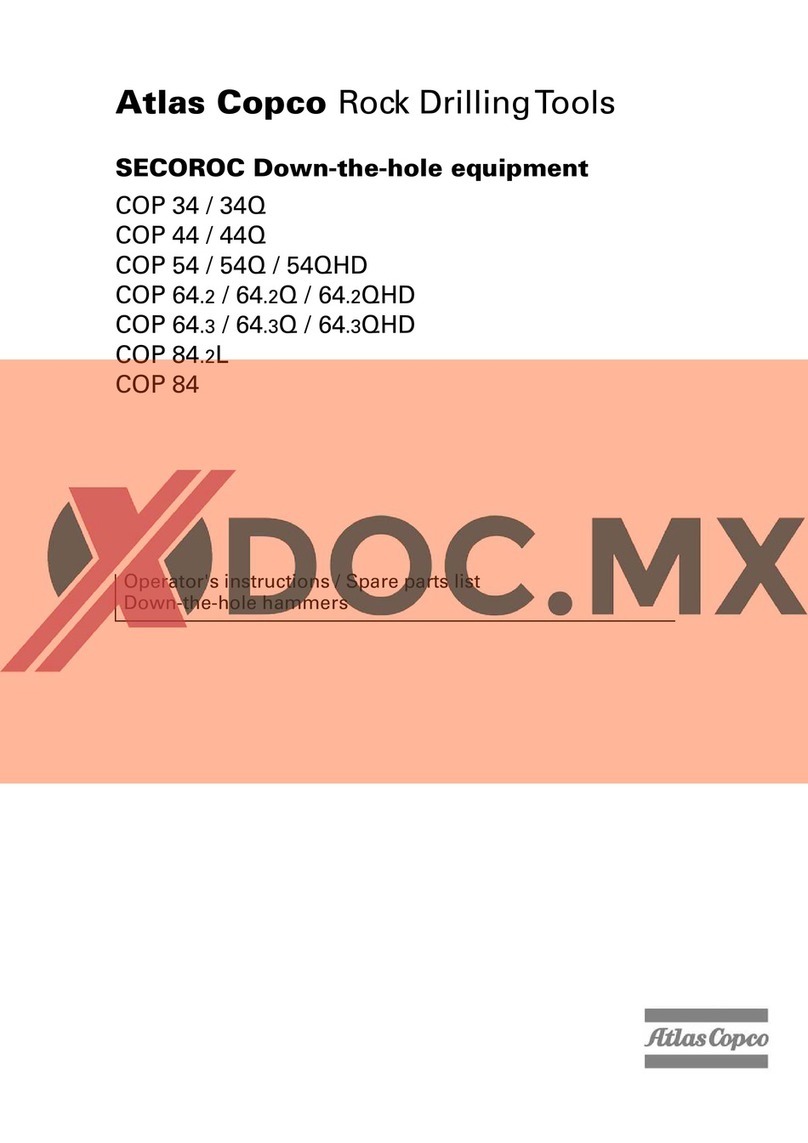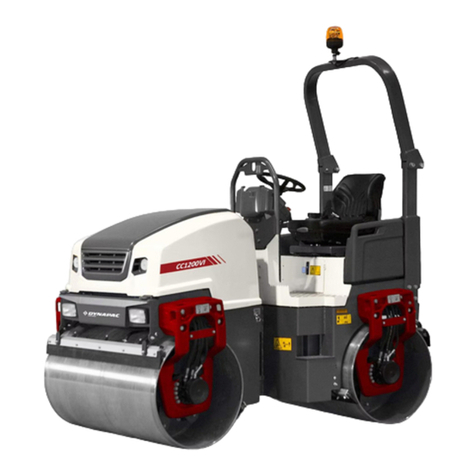Woods RB72.50 User manual

OPER ATOR'S MANUAL
REAR BLADES
RB72.50, RB84.50, RB96.50
RB84.60, RB96.60
(Rev. 1/05/2018)
MAN1170

2 Introduction
Gen’l (Rev. 2/25/2016)
TO THE DEALER:
Assembly and proper installation of this product is the responsibility of the Woods
®
dealer. Read manual instructions
and safety rules. Make sure all items on the Dealer’s Pre-Delivery and Delivery Check Lists in the Operator’s Manual
are completed before releasing equipment to the owner.
The dealer must complete the online Product Registration form at the Woods Dealer Website which certifies that
all Dealer Check List items have been completed. Dealers can register all Woods product at
dealer.WoodsEquipment.com under Product Registration.
Failure to register the product does not diminish customer’s warranty rights.
TO THE OWNER:
Read this manual before operating your Woods equipment. Theinformation presented will prepare you to do abetter and
safer job. Keep this manual handy for ready reference. Require all operators to read this manual carefully and become
acquainted with all adjustment and operating procedures before attempting to operate. Replacement manuals can be
obtained from your dealer. To locate your nearest dealer, check the Dealer Locator at www.WoodsEquipment.com, or in
the United States and Canada call 1-800-319-6637.
The equipment you have purchased has been carefully engineered and manufactured to provide dependable and
satisfactory use. Like all mechanical products, it will require cleaning and upkeep. Lubricate the unit as specified.
Observe all safety information in this manual and safety decals on the equipment.
For service, your authorized Woods dealer has trained mechanics, genuine Woods service parts, and the necessary
tools and equipment to handle all your needs.
Use only genuine Woods service parts. Substitute parts will void the warranty and may not meet standards required for
safe and satisfactory operation. Record the model number and serial number of your equipment in the spaces
provided:
Model:
_______________________________
Date of Purchase:
_____________________
Serial Number:
(see Safety Decal section for location) ____________________________________
Provide this information to your dealer to obtain correct repair parts.
Throughout this manual, the term NOTICE is used to indicate that failure to observe can cause damage to equipment.
The terms CAUTION, WARNING, and DANGER are used in conjunction with the Safety-Alert Symbol (a triangle with
an exclamation mark) to indicate the degree of hazard for items of personal safety.

Introduction 3
MAN1170 (6/1/2016)
TABLE OF CONTENTS
INTRODUCTION. . . . . . . . . . . . . . . . . . . . . . . . . . . . . . . . . . . . . . . . . . . . . . 2
SPECIFICATIONS. . . . . . . . . . . . . . . . . . . . . . . . . . . . . . . . . . . . . . . . . . . . . 4
GENERAL INFORMATION . . . . . . . . . . . . . . . . . . . . . . . . . . . . . . . . . . . . . . 4
SAFETY RULES . . . . . . . . . . . . . . . . . . . . . . . . . . . . . . . . . . . . . . . . . . . . . . 5
SAFETY DECALS . . . . . . . . . . . . . . . . . . . . . . . . . . . . . . . . . . . . . . . . . . . . . 8
OPERATION . . . . . . . . . . . . . . . . . . . . . . . . . . . . . . . . . . . . . . . . . . . . . . . . 10
OPTIONAL EQUIPMENT . . . . . . . . . . . . . . . . . . . . . . . . . . . . . . . . . . . . . . 16
ASSEMBLY INSTRUCTIONS . . . . . . . . . . . . . . . . . . . . . . . . . . . . . . . . . . . 19
OWNER SERVICE . . . . . . . . . . . . . . . . . . . . . . . . . . . . . . . . . . . . . . . . . . . 24
DEALER CHECK LISTS . . . . . . . . . . . . . . . . . . . . . . . . . . . . . . . . . . . . . . . 25
PARTS. . . . . . . . . . . . . . . . . . . . . . . . . . . . . . . . . . . . . . . . . . . . . . . . . . . . . 27
BOLT TORQUE CHART . . . . . . . . . . . . . . . . . . . . . . . . . . . . . . . . . . . . . . . 40
BOLT SIZE CHART & ABBREVIATIONS . . . . . . . . . . . . . . . . . . . . . . . . . . 41
PRODUCT WARRANTY . . . . . . . . . . . . . . . . . . . . . . . . . . . . . . . . . . . . . . . 42
REPLACEMENT PARTS WARRANTY. . . . . . . . . . . . . . . .Inside Back Cover
Si no lee Ingles, pida ayuda a
alguien que si lo lea para que le
traduzca las medidas de seguridad.
LEA EL INSTRUCTIVO!
!

4 Introduction
MAN1170 (6/1/2016)
SPECIFICATIONS
GENERAL INFORMATION
The purpose of this manual is to assist you in operating
and maintaining your rear blade. Read it carefully. It
furnishes information and instructions that will help you
achieve years of dependable performance. These
instructions have been compiled from extensive field
experience and engineering data. Some information
may be general in nature due to unknown and varying
operating conditions. However, through experience
and these instructions, you should be able to develop
procedures suitable to your particular situation.
The illustrations and data used in this manual were cur-
rent at the time of printing, but due to possible inline
production changes, your machine may vary slightly in
detail. We reserve the right to redesign and change the
machines as may be necessary without notification.
Throughout this manual, references are made to right
and left directions. These are determined by standing
behind the equipment facing the direction of forward
travel.
RB72.50 RB84.50 RB96.50 RB84.60 RB96.60
Cutting Width 71" 83" 95" 83" 95"
Moldboard Height 17" 17" 17" 17-1/2" 17-1/2"
Moldboard Thickness 1/4" 1/4" 1/4" 5/16" 5/16"
Overall Height 41-1/4" 41-1/4" 41-1/4" 40" 40"
Overall Depth 50" 50" 50" 55" 55"
Weight (Mechanical) 455 lbs 475 lbs 495 lbs 657 lbs 682 lbs
Weight (Hydraulic) --- --- --- 705 lbs 730 lbs
Cutting Edge 1/2" x 6"
Reversible 1/2" x 6"
Reversible 1/2" x 6"
Reversible 1/2" x 6"
Reversible 1/2" x 6"
Reversible
Angle Adjustments Forward 7, up to 45° 7, up to 45° 7, up to 45° 7/Hyd., up to 45° 7/Hyd., up to 45°
Angle Adjustments Backfill 7, up to 45° 7, up to 45° 7, up to 45° 7/Hyd., up to 45° 7/Hyd., up to 45°
Offset Adjustments 6", 12", 18" 6", 12", 18" 6", 12", 18"
Ratchet/Hyd., up to 20" Ratchet/Hyd., up to 20"
Tilt Adjustments 5, up to 23° 5, up to 23° 5, up to 23°
Ratchet/ Hyd., up to 23° Ratchet/ Hyd., up to 23°
Hitch Cat. 1 or 2 Cat. 1 or 2 Cat. 1 or 2 Cat. 1 or 2 Cat. 1 or 2
(Optional) Quick Hitch Cat. 1 or 2 Cat. 1 or 2 Cat. 1 or 2 Cat. 1 or 2 Cat. 1 or 2
Tractor HP (4WD) Rating 65 HP Max. 65 HP Max. 65 HP Max. 85 HP Max. 85 HP Max.
Accessories Endplates Endplates Endplates Endplates Endplates
Skid Shoes Skid Shoes Skid Shoes Skid Shoes Skid Shoes
Hydraulic
Angle Hydraulic
Angle Hydraulic
Angle Tail Wheel Tail Wheel

Safety 5
RBM SR (5/11/2016)
(Rev. 3/6/2017)
INSTALLATION
Hydraulics must be connected as instructed in
this manual. Do not substitute parts, modify, or
connect in any other way.
TRAINING
Safety instructions are important! Read all
attachment and power unit manuals; follow all
safety rules and safety decal information. (Replace-
ment manuals and safety decals are available from
your dealer. To locate your nearest dealer, check
the Dealer Locator at www.WoodsEquipment.com,
or in the United States and Canada call 1-800-319-
6637.) Failure to follow instructions or safety rules
can result in serious injury or death.
If you do not understand any part of this manual
and need assistance, see your dealer.
Know your controls and how to stop engine and
attachment quickly in an emergency.
Operators must be instructed in and be capable
of the safe operation of the equipment, its attach-
ments, and all controls. Do not allow anyone to
operate this equipment without proper instruc-
tions.
Keep hands and body away from pressurized
lines. Use paper or cardboard, not hands or other
body parts to check for leaks. Wear safety goggles.
Hydraulic fluid under pressure can easily penetrate
skin and will cause serious injury or death.
Make sure that all operating and service person-
nel know that if hydraulic fluid penetrates skin, it
must be surgically removed as soon as possible by
a doctor familiar with this form of injury or gan-
grene, serious injury, or death will result. CON-
TACT A PHYSICIAN IMMEDIATELY IF FLUID
ENTERS SKIN OR EYES. DO NOT DELAY.
Never allow children or untrained persons to
operate equipment.
PREPARATION
Check that all hardware is properly installed.
Always tighten to torque chart specifications
unless instructed otherwise in this manual.
Air in hydraulic systems can cause erratic oper-
ation and allows loads or equipment components
to drop unexpectedly. When connecting equipment
or hoses or performing any hydraulic maintenance,
purge any air in hydraulic system by operating all
hydraulic functions several times. Do this before
putting into service or allowing anyone to
approach the equipment.
Make sure all hydraulic hoses, fittings, and
valves are in good condition and not leaking before
starting power unit or using equipment. Check and
route hoses carefully to prevent damage. Hoses
must not be twisted, bent sharply, kinked, frayed,
pinched, or come into contact with any moving
parts. Operate moveable components through full
operational range to check clearances. Replace
any damaged hoses immediately.
After connecting hoses, check that all control
lever positions function as instructed in the Opera-
tor's Manual. Do not put into service until control
lever and equipment movements are correct.
Your dealer can supply original equipment
hydraulic accessories and repair parts. Substitute
parts may not meet original equipment specifica-
tions and may be dangerous.
Set tractor hydraulic relief valve at 2500 psi (170
bars) (17,000 kPa) to prevent injury and equipment
damage due to hydraulic system failure.
Do not connect a low-pressure hydraulic hose
into a high-pressure system—it will burst the hose.
Do not use a high-pressure hose in place of a low-
pressure hose—it is possible to rupture the valve.
Always wear relatively tight and belted clothing
to avoid entanglement in moving parts. Wear
sturdy, rough-soled work shoes and protective
equipment for eyes, hair, hands, hearing, and head.
Make sure attachment is properly secured,
adjusted, and in good operating condition.
(Safety Rules continued on next page)
Safety is a primary concern in the design and
manufacture of our products. Unfortunately, our
efforts to provide safe equipment can be wiped
out by an operator’s single careless act.
In addition to the design and configuration of
equipment, hazard control and accident preven-
tion are dependent upon the awareness, concern,
judgement, and proper training of personnel
involved in the operation, transport, maintenance
and storage of equipment.
It has been said “The best safety device is an
informed, careful operator.” We ask you to be that
kind of operator.
SAFETY RULES
ATTENTION! BECOME ALERT! YOUR SAFETY IS INVOLVED!

6 Safety
RBM SR (5/11/2016)
(Rev. 3/6/2017)
(Safety Rules continued from previous page)
Power unit must be equipped with ROPS or
ROPS cab and seat belt. Keep seat belt securely
fastened. Falling off power unit can result in death
from being run over or crushed. Keep foldable
ROPS systems in “locked up” position at all times.
A minimum 20% of tractor and equipment
weight must be on the tractor front wheels when
attachments are in transport position. Without this
weight, front tractor wheels could raise up result-
ing in loss of steering. The weight may be attained
with front wheel weights, ballast in tires, front trac-
tor weights or front loader. Weigh the tractor and
equipment. Do not estimate.
Make sure all safety decals are installed.
Replace if damaged. (See Safety Decals section for
location.)
Make sure circuit selector lever does not hit
tractor cab, etc. throughout operating range of 3-
point hitch of tractor. Bend lever, if necessary, to
clear cab, but it should still be convenient to oper-
ate from the tractor seat.
OPERATION
Do not allow bystanders in the area when oper-
ating, attaching, removing, assembling, or servic-
ing equipment.
Do not operate equipment while under the influ-
ence of alcohol or drugs.
Operate only in daylight or good artificial light.
Keep hands, feet, hair, and clothing away from
equipment while engine is running. Stay clear of all
moving parts.
Always comply with all state and local lighting
and marking requirements.
Never allow riders on power unit or attachment.
Power unit must be equipped with ROPS or
ROPS cab and seat belt. Keep seat belt securely
fastened. Falling off power unit can result in death
from being run over or crushed. Keep foldable
ROPS systems in “locked up” position at all times.
Always sit in power unit seat when operating
controls or starting engine. Securely fasten seat
belt, place transmission in neutral, engage brake,
and ensure all other controls are disengaged
before starting power unit engine.
Look down and to the rear and make sure area
is clear before operating in reverse.
Do not operate on steep slopes.
Do not stop, start, or change directions sud-
denly on slopes.
Use extreme care and reduce ground speed on
slopes and rough terrain.
Watch for hidden hazards on the terrain during
operation.
Stop power unit and equipment immediately
upon striking an obstruction. Turn off engine,
remove key, inspect, and repair any damage before
resuming operation.
Before changing positions of manual swing, tilt,
or angle positions:
• Park tractor on level ground, apply parking
brake, level implement boom, shut off tractor,
and remove key.
• Make manual changes slowly and carefully to
prevent hazardous movement of mechanisms.
• Never stand in positions where you could
become entrapped during adjustment changes
or if the 3-point hitch suddenly lowers.
• The moldboard may be inadvertently removed
at any time while the retaining bolts are
removed. Use caution during all stages of
adjustment.
Always secure lock pins with safety pins to pre-
vent lock pins from bumping out of the positioning
holes. Failure to do so may result in accidents and/
or damage to blade.
TRANSPORTATION
Before transporting, pivot the unit so red reflec-
tors face the rear.
Ensure all reflectors are clearly visible. Remove
debris before transporting.
Always comply with all state and local lighting
and marking requirements.
Never allow riders on power unit or attachment.
Do not operate or transport on steep slopes.
Do not operate or transport equipment while
under the influence of alcohol or drugs.
Adjust blade offset as necessary to ensure unit
does not extend more than 4 feet left of center of
tractor before transporting on public roads.
(Safety Rules continued on next page)
SAFETY RULES
ATTENTION! BECOME ALERT! YOUR SAFETY IS INVOLVED!

Safety 7
RBM SR (5/11/2016)
(Rev. 3/6/2017)
(Safety Rules continued from previous page)
MAINTENANCE
Before dismounting power unit or performing
any service or maintenance, follow these steps:
disengage power to equipment, lower the 3-point
hitch and all raised components to the ground,
operate valve levers to release any hydraulic pres-
sure, set parking brake, stop engine, remove key,
and unfasten seat belt.
NEVER GO UNDERNEATH EQUIPMENT. Never
place any part of the body underneath equipment
or between moveable parts even when the engine
has been turned off. Hydraulic system leak-down,
hydraulic system failures, mechanical failures, or
movement of control levers can cause equipment
to drop or rotate unexpectedly and cause severe
injury or death.
• Service work does not require going under-
neath implement.
• Read Operator's Manual for service instruc-
tions or have service performed by a qualified
dealer.
Always wear relatively tight and belted clothing
to avoid entanglement in moving parts. Wear
sturdy, rough-soled work shoes and protective
equipment for eyes, hair, hands, hearing, and head.
Do not modify or alter or permit anyone else to
modify or alter the equipment or any of its compo-
nents in any way.
Make sure attachment is properly secured,
adjusted, and in good operating condition.
Never perform service or maintenance with
engine running.
Keep all persons away from operator control
area while performing adjustments, service, or
maintenance.
Tighten all bolts, nuts and screws to torque
chart specifications. Check that all cotter pins are
installed securely to ensure equipment is in a safe
condition before putting unit into service.
Make sure all safety decals are installed.
Replace if damaged. (See Safety Decals section for
location.)
Do not disconnect hydraulic lines until machine
is securely blocked or placed in lowest position
and system pressure is released by operating
valve levers.
STORAGE
Secure equipment parking stand(s) in park posi-
tion before detaching.
Keep children and bystanders away from stor-
age area.

8 Safety
MAN1170 (6/1/2016)
1 - Serial Number Plate
2 - 1002941 3 - 1004250
6 - 1003193
7 - 1002940 Yellow Reflector (Front)
8 - 57123 Red Reflector (Rear)
SAFETY & INSTRUCTIONAL DECALS
ATTENTION! BECOME ALERT! YOUR SAFETY IS INVOLVED!
Replace Immediately If Damaged!

Safety 9
MAN1170 (6/1/2016)
SAFETY & INSTRUCTIONAL DECALS
ATTENTION! BECOME ALERT! YOUR SAFETY IS INVOLVED!
Replace Immediately If Damaged!
BE CAREFUL!
Use a clean, damp cloth to clean safety decals. Avoid spraying too
close to decals when using a pressure washer; high-pressure water
can enter through very small scratches or under edges of decals
causing them to peel or come off.
Replacement safety decals can be ordered free from your Woods
dealer. To locate your nearest dealer, check the Dealer Locator at
www.WoodsEquipment.com, or in the United States and Canada call
1-800-319-6637.
5 - 55121
4 - W19924 (RBxx.60 Only)

10 Operation
MAN1170 (6/1/2016)
OPERATION
The operator is responsible for the safe operation of
this equipment. Operators must be instructed in and be
capable of the safe operation of the equipment, its
attachments and all controls. Do not allow anyone to
operate this equipment without proper instructions.
The RB 50 and 60 Series Rear Blades are designed for
a wide range of applications. The Rear Blade may be
used for scraping, leveling, grading and backfilling and
may be angled to windrow debris to the side for
removal.
Optional kits are also available for the 50 and 60 Series
Rear Blades and are included in this manual. Optional
Hydraulic Adjustment Kits are designed to make
adjustment easier and quicker on the 50 and 60 Series
Blades. Endplate Kits assist with accumulating or wind-
rowing material, and the Skid Shoe Kit is helpful in con-
trolling cutting height when operating on hard surfaces.
For the 60 Series Blades, the Tail Wheel Kit is useful
for grading and leveling work.
Never allow children or untrained persons to
operate equipment.
Do not allow bystanders in the area when oper-
ating, attaching, removing, assembling, or servic-
ing equipment.
Never allow riders on power unit or attachment.
Keep all persons away from operator control
area while performing adjustments, service, or
maintenance.
Keep hands and body away from pressurized
lines. Use paper or cardboard, not hands or other
body parts to check for leaks. Wear safety goggles.
Hydraulic fluid under pressure can easily penetrate
skin and will cause serious injury or death.
Make sure that all operating and service person-
nel know that if hydraulic fluid penetrates skin, it
must be surgically removed as soon as possible by
a doctor familiar with this form of injury or gan-
grene, serious injury, or death will result.
CONTACT A PHYSICIAN IMMEDIATELY IF FLUID
ENTERS SKIN OR EYES. DO NOT DELAY.
A minimum 20% of tractor and equipment
weight must be on the tractor front wheels when
attachments are in transport position. Without this
weight, front tractor wheels could raise up result-
ing in loss of steering. The weight may be attained
with front wheel weights, ballast in tires, front trac-
tor weights or front loader. Weigh the tractor and
equipment. Do not estimate.
Always wear relatively tight and belted clothing
to avoid getting caught in moving parts. Wear
sturdy, rough-soled work shoes and protective
equipment for eyes, hair, hands, hearing, and head;
and respirator or filter mask where appropriate.
Stop power unit and equipment immediately
upon striking an obstruction. Turn off engine, set
parking brake, remove key, inspect, and repair any
damage before resuming operation.
PRE-OPERATION CHECK LIST
___ Check that all hardware is properly installed and
secured.
___ Do not allow riders.
___ Review and follow all safety rules and safety
decal instructions on page 5 through page 9.
___ Check that equipment is properly and securely
attached to tractor.
___ Make sure tractor ROPS or ROPS CAB and seat
belt are in good condition. Keep seat belt
securely fastened during operation.
___ Check that all safety decals are installed and in
good condition. Replace if needed.
ATTACH REAR BLADE TO TRACTOR
This Rear blade should be mounted on tractors within
the engine horsepower rating specified on page 4. Do
not exceed maximum engine horsepower rating for a
given model.
RB 50 and 60 Series blades are shipped completely
assembled and may be installed on tractors equipped
with a Category 1 or Category 2 3-point hitch.
The tractor draw bar must be removed or installed in its
shortest position to allow the blade to rotate 180°.
NOTICE
The 3/4" bolt and sleeve in the lower hole provide the
attachment point for a Cat 1 quick hitch. do not remove
this bolt and sleeve when operating the Rear Blade.
A
WARNING
A
CAUTION

Operation 11
MAN1170 (6/1/2016)
RB 50 & 60 Series - Category 1
(See Figure 1)
1. Place tractor 3-point lower lift arms between inner
mounting lugs.
2.
Use Cat 1 hitch pins (1) and secure with klik pins (2).
3. Attach tractor’s top link to the front hole of the Rear
blade frame (3).
4. Secure with the heavy-duty top link pin and
retaining pin supplied with the tractor top link.
Figure 1. RB 50 & 60 Series Cat 1 & 2 Connection
RB 50 & 60 Series - Category 2
(See Figure 1)
1. Place tractor 3-point lower lift arms between outer
mounting lugs.
2. Use Cat 2 busings (4) (included) over hitch pins (1)
and secure with klik pins (2).
3. Attach tractor’s top link to the rear hole of the Rear
Blade frame (5).
4. Secure with the heavy-duty top link pin and
retaining pin supplied with the tractor top link.
RB 50 & 60 Series - Quick Hitch (Optional)
(See Figure 2)
An optional Quick Hitch Bushing Kit is available for
Category 1 and Category 2 tractors.
NOTE: The RB 50 & 60 Series Rear Blades will
attach to a Cat 1 or Cat 2 Quick Hitch. Use Quick
Hitch Bushing Kit 1043173 when using a quick
hitch coupler.
1. Remove lower hitch pins (1), and Cat 2 bushings
(3) from Rear Blade frame.
2. Place Quick Hitch Bushings (4) between the inner
hitch lugs (Cat 1), or between outer hitch lugs (Cat
2), over hitch pins and secure with klik pins (2).
3. Align quick hitch with lower bushings and upper
sleeve (5) in the lower hole of the Rear Blade
Frame.
Figure 2. RB 50 & 60 Series Quick Hitch Connection
NOTICE
■
Do not use Quick Hitch with Tail Wheel kit.
See Page 18 for floating top link kit.
PARKING STAND
NOTICE
The parking stand size and location varies between the
50 Series and the 60 Series, but the function and oper-
ation are the same.
Operating Position
(See Figure 3)
1. With Rear Blade attached and slightly raised,
remove parking stand pin and clip (1).
2. Rotate parking stand (2) upwards and align with
upper hole on Rear Blade Frame (3).
3. Secure parking stand with pin and clip.
DP11
1. Hitch pin
2. Klik pin
3. Cat 1 top link attach hole
4. Cat 2 hitch bushing
5. Cat 2 top link attach hole
DP11
1. Hitch pin
2. Klik pin
3. Cat 2 hitch bushing
4. Quick hitch bushing
5. Quick hitch top attach hole

12 Operation
MAN1170 (6/1/2016)
Figure 3. Parking Stand in Operation Position
Storage Position
(See Figure 3)
1. With Rear Blade attached and slightly raised,
remove parking stand pin and clip (1).
2. Rotate parking stand (2) downward and align with
lower hole on Rear Blade Frame (4).
3. Secure parking stand with pin and clip.
4. Lower Rear blade so cutting edge and Parking
Stand are flat on the ground, then disconnect Rear
blade from tractor.
ADJUSTMENTS
Set tractor hydraulic relief valve at 2500 psi (170
bars) (17,000 kPa) to prevent injury and equipment
damage due to hydraulic system failure.
Hydraulic Angle and Offset adjustment kits
include a double acting relief valve to provide
protection against over pressurizing the Rear
Blade’s hydraulic system upon striking an
obstruction. Keep valves installed and in good
working order at all times.
Before changing positions of manual swing, tilt,
or angle positions:
• Park tractor on level ground, apply parking
brake, level implement boom, shut off tractor,
and remove key.
• Make manual changes slowly and carefully to
prevent hazardous movement of mechanisms.
• Never stand in positions where you could
become entrapped during adjustment changes
or if the 3-point hitch suddenly lowers.
• The moldboard may be inadvertently removed
at any time while the retaining bolts are
removed. Use caution during all stages of
adjustment.
Always secure lock pins with safety pins to pre-
vent lock pins from bumping out of the positioning
holes. Failure to do so may result in accidents
and/or damage to blade.
Angle and Reverse Adjustment
Mechanical RB 50 & 60 Series
(See Figure 4)
The RB 50 and 60 Series Rear Blades may be angled
15, 30 and 45 degrees, right or left from center, in both
forward grading and backfilling directions. For most
tractors, the blade may be rotated 360 degrees without
unhooking from the tractor.
1. Raise the blade a couple inches off the ground by
operating the lift control lever of the tractor 3-point
hitch.
2. Remove lock pin (1) and safety clip (2).
3. Set Blade to desired forward or backfill position
and replace lock pin and safety clip.
Figure 4. RB 50 Series Angle Adjustment
NOTE: Blade tilt may need to be slightly adjusted
in order to rotate 360 degrees. See Tilt Adjustment.
DP11
1. Parking stand pin & clip
A
WARNING
A
CAUTION
DP11
1. Lock pin
2. Safety clip

Operation 13
MAN1170 (6/1/2016)
Angle Adjustment - Hydraulic RB50 & 60
Series (Optional)
(See Figure 5)
The RB50 & 60 Series Rear Blades may be angled up
to 45 degrees, or to any position in between, right or
left from center, by hydraulic remote control from the
tractor seat. To prevent damage to the Blade and
hydraulic cylinder, make sure lock pin (1) is removed.
1. Raise the Blade a couple inches off the ground by
operating the lift control lever of the tractor 3-point
hitch.
2. Actuate the control valve the angle cylinder (2) is
connected to until the desired adjustment is
reached.
3. On tractors with two circuit selector valves, select
angling circuit and actuate the tractor control valve
connected to the selector valve.
NOTE: Do not operate the selector valve under
load.
Figure 5. RB 50 Series Hydraulic Angle Adjustment
Reverse Adjustment - Hydraulic RB 50 &
60 Series (Optional)
(See Figure 5)
The RB 50 & 60 Series Rear Blades may be reversed
to backfilling allowing adjustment up to 45 degrees, or
to any position in between, right or left from center, by
hydraulic remote control from the tractor seat. To pre-
vent damage to the Blade and hydraulic cylinder make
sure lock pin (1) is removed.
1. Raise the Blade a couple inches off the ground by
operating the lift control lever of the tractor 3-point
hitch.
2. Detach the angle cylinder from the hydraulic angle
arm (3) by removing the lock pin and clip.
3. Rotate the Blade 180 degrees then lower blade to
ground by operating the lift control lever of the
tractor 3-point hitch.
4. Remove lock nut (4) and retaining ring (5) then
rotate hydraulic angle arm 180 degrees.
5. Reinstall retaining ring, lock nut and angle cylinder.
6. Adjustment in the backfilling position follows the
same procedure as forward angle adjustment.
NOTE: Blade tilt may need to be slightly adjusted
in order to rotate 180 degrees. See Tilt Adjustment.
Offset Adjustment - Mechanical RB 50
Series
(See Figure 6)
■
The moldboard may be inadvertently removed
at any time while the retaining bolts are removed.
Use caution during all stages of adjustment.
The RB 50 Series Rear Blades may be offset 6", 12" or
18" right or left from center. Adjustment can be made
by unbolting the moldboard from the frame, sliding the
moldboard to a new location and bolting the moldboard
back to the frame.
1. Raise the Blade two inches or less off the ground
by operating the lift control lever of the tractor 3-
point hitch.
2. Remove top two bolts (1) and nuts (2) securing
moldboard (3) to frame (4). Loosen, but do not
completely remove bottom two nuts. Bolts may
drop into channel if nuts are completely removed.
3. Carefully slide moldboard to desired location, align
bolt holes, and bolt moldboard in place.
DP11
1. Lock pin
2. Angle cylinder
3. Angle arm
4. Lock nut
A
CAUTION
(Rev. 3/10/2017)

14 Operation
MAN1170 (6/1/2016)
Figure 6. RB 50 Series Offset Moldboard
Offset Adjustment - Mechanical RB 60
Series
(See Figure 7)
The RB 60 Series Rear Blades may be offset up to 20",
or to any position in between, right or left from center,
using a mechanical ratchet jack.
1. Raise the Blade a couple inches off the ground by
operating the lift control lever of the tractor 3-point
hitch.
2. Rotate the ratchet jack (1) clockwise or counter-
clockwise to achieve desired offset.
3. Lock ratchet jack in place by securing jam nut.
Figure 7. RB 60 Series Offset Adjustment
Offset Adjustment - Hydraulic RB 60
Series
(See Figure 7)
The RB 60 Series Rear Blades may be offset up to 20",
or to any position in between, right or left from center,
by hydraulic remote control from the tractor seat.
1. Raise the Blade a couple inches off the ground by
operating the lift control lever of the tractor 3-point
hitch.
2. Actuate the control valve the offset cylinder (2) is
connected to until the desired adjustment is
reached.
3. On tractors with two circuit selector valves, select
offset circuit and actuate the tractor control valve
connected to the selector valve.
NOTE: Do not operate the selector valve under
load.
Tilt Adjustment - Mechanical RB 50 Series
(See Figure 8)
The RB 50 Series Rear Blades may be tilted up to 23
degrees, in five positions, up or down from level.
1. Raise the Blade off the ground by operating the lift
control lever of the tractor 3-point hitch.
2. Remove lock pin (1) and safety clip (2).
3. Set blade to desired tilt position (3) and replace
lock pin and safety clip.
DP11
1. Bolt
2. Nut
3. Moldboard
4. Blade frame
DP11
1. Ratchet jack
2. Offset cylinder

Operation 15
MAN1170 (6/1/2016)
Figure 8. RB 50 Series Tilt Adjustment
Tilt Adjustment - Mechanical RB 60 Series
(See Figure 9)
The RB 60 Series Rear Blades may be tilted up to 23
degrees, or to any position in between, up or down
from level, using a mechanical ratchet jack.
1. Raise the Blade off the ground by operating the lift
control lever of the tractor 3-point hitch.
2. Rotate the ratchet jack (1) clockwise or counter-
clockwise to achieve desired tilt.
3. Lock ratchet in place by securing jam nut.
Figure 9. RB 60 Series Tilt Adjustment
Tilt Adjustment - Hydraulic RB 60 Series
(Optional)
(See Figure 9)
The RB 60 Series Rear Blades may be tilted up to 23
degrees, or to any position in between, up or down
from level, by hydraulic remote control from the tractor
seat.
1. Raise the Blade off the ground by operating the lift
control lever of the tractor 3-point hitch.
2. Actuate the control valve the tilt cylinder (2) is
connected to until the desired adjustment is
reached.
NOTE: In some cases it may not be possible to
fully tilt and angle and still be able to raise the
blade high enough to clear the ground. In this case,
use less tilt.
NOTE: It is possible for the blade to contact other
components if the blade is tilted when angled.
Operate blade slowly when angling blade.
1. Lock pin
2. Safety clip
3. Tilt position
DP11
1. Ratchet jack
2. Tilt cylinder

16 Optional Equipment
MAN1170 (6/1/2016)
OPTIONAL EQUIPMENT
RB 50 SERIES HYDRAULIC ANGLE KIT
1043128
(See Figure 10)
1. With blade on the ground, remove lock pin and
safety clip (1), lock nut (2), retaining ring (3) and
washer (4). Discard washer.
2. Install hydraulic angle arm (5) in place of washer.
Reinstall retaining ring and lock nut.
3. Install hydraulic angle cylinder (6) with sleeve (7),
and new pin and safety clip (8).
4. Install 90 degree elbows (9) to cylinder.
5. Attach relief valve (10) to holes in Rear blade
frame (11) with provided cap screws (12) and lock
nuts (13).
6. Attach hoses (14 & 15) to relief valve then elbows
as shown.
7. Attach fittings (16) to relief valve, then hoses (17)
to fittings.
8. Install quick disconnect fittings (18) to hoses.
9. Secure hoses to A-frame using supplied clamp
(19), cap screw (20) and lock nut (13).
Figure 10.
RB 50 Series Hydraulic Angle Kit Installation
1. Lock pin & safety clip
2. Lock nut
3. Retaining ring
4. Washer
5. Angle arm
6. Angle cylinder
7. Sleeve
8. Cylinder pin & safety clip
9. 90° Elbow
10. Relief valve
11. Rear blade frame
12. Cap screw
13. Lock nut
14. Hose
15. Hose
16. Hydraulic fitting
17. Hose
18. Quick disconnect fitting
19. Clamp
20. Cap screw

Optional Equipment 17
MAN1170 (6/1/2016)
RB 50 & 60 SERIES ENDPLATE KIT
1043140, 1043135
(See Figure 11)
1. Install endplate (1) to moldboard (2) using supplied
carriage bolts (3) and lock nuts (4)
2. Repeat installation for other side. (Not shown).
Figure 11. RB 50 & 60 Series Endplate Installation
RB 50 & 60 SERIES SKID SHOE KIT 18300
& RB72.50 SKID SHOE KIT 601730
(See Figure 12)
1. Remove plow bolts and lock nuts from each end of
cutting edge.
2. Attach skid shoe brackets (1) with supplied plow
bolt (2), washer (3), and lock nut (4).
3. Assemble skid shoe (5) to bracket using washers
(6) and spacers (7) as needed to achieve desired
height. Retain with klik pin (8).
NOTE: One washer must be installed between the
bracket and the spacers. Make sure the skid shoe
rotates freely to prevent premature skid shoe wear.
Figure 12. RB 50 & 60 Series Skid Shoe Installation
RB 60 SERIES TAIL WHEEL KIT 1043145
Assemble Tail Wheel
(See Figure 13)
■
Floating links must be used with tail wheel to
avoid equipment damage.
■
Tail wheel kit will not function properly when
used with Quick Hitch.
1. Install tail wheel mount (1) to rear blade boom (2)
using supplied carriage bolts (3) and lock nuts (4)
as shown.
2. Install tail wheel boom (5) on tail wheel mount
using supplied pin (6) and klik pins (7).
3. Attach wheel and yoke assembly (8) to boom and
secure with washer (9) and pin (10).
4. Install ratchet jack (11) between tail wheel mount
and boom with supplied pins.
1. End plate
1. Skid shoe bracket
2. Plow bolt
3. Washer
4. Lock nut
5. Skid shoe
6. Washer
7. Spacer
8. Klik pin
(Rev. 1/05/2018)

18 Optional Equipment
MAN1170 (6/1/2016)
Figure 13. RB 60 Series Tail Wheel Installation
Assemble Floating Link
(See Figure 14)
1. Secure rear holes of top link channel (1) to A-frame
(2) using supplied pin (3), washers (4), and cotter
pins (5).
2. Install sleeve (6) in front holes with pin (7) and klik
pin (8).
Adjust Tail Wheel Assembly
Set blade cutting edge 1/2" above the ground with the
tractor 3-point hitch. Adjust tail wheel until tire is on the
ground and the top link pin is centered in the floating
link slot. Fine tune the grading height by raising or low-
ering the 3-point hitch.
Figure 14. RB 60 Series Floating Link Installation
1. Tail wheel mount
2. Rear blade boom
3. Carriage bolt
4. Lock nut
5. Tail wheel boom
6. Pin
7. Klik pin
8. Wheel & yoke assembly
9. Washer
10. Lock pin
11. Ratchet jack
1. Top link channel
2. Re
bla
A-
fra
3. Pin
4. Wa
r

19 Assembly
MAN1170 (6/1/2016)
ASSEMBLY INSTRUCTIONS
DEALER SET-UP INSTRUCTIONS
Assembly of this Rear Blade is the responsibility of the
WOODS dealer. The 50 Series Rear Blades are
shipped fully assembled. The 60 Series Rear Blades
are shipped partially assembled and will need the
mechanical or hydraulic adjustment kits assembled.
All Rear Blades should be delivered to the owner com-
pletely assembled, lubricated, and adjusted for normal
conditions.
Complete the Dealer Checklist on Page 25 when set-
up is complete and the Rear Blade is delivered to the
Owner.
Before dismounting power unit or performing
any service or maintenance, follow these steps:
disengage power to equipment, lower the 3-point
hitch and all raised components to the ground,
operate valve levers to release any hydraulic pres-
sure, set parking brake, stop engine, remove key,
and unfasten seat belt.
Keep all persons away from operator control
area while performing adjustments, service, or
maintenance.
Keep hands and body away from pressurized
lines. Use paper or cardboard, not hands or other
body parts to check for leaks. Wear safety goggles.
Hydraulic fluid under pressure can easily penetrate
skin and will cause serious injury or death.
Make sure that all operating and service person-
nel know that if hydraulic fluid penetrates skin, it
must be surgically removed as soon as possible by
a doctor familiar with this form of injury or gan-
grene, serious injury, or death will result.
CONTACT A PHYSICIAN IMMEDIATELY IF FLUID
ENTERS SKIN OR EYES. DO NOT DELAY.
NEVER GO UNDERNEATH EQUIPMENT. Never
place any part of the body underneath equipment
or between moveable parts even when the engine
has been turned off. Hydraulic system leak-down,
hydraulic system failures, mechanical failures, or
movement of control levers can cause equipment
to drop or rotate unexpectedly and cause severe
injury or death.
• Service work does not require going under-
neath implement.
• Read Operator's Manual for service instruc-
tions or have service performed by a qualified
dealer.
Always wear relatively tight and belted clothing
to avoid entanglement in moving parts. Wear
sturdy, rough-soled work shoes and protective
equipment for eyes, hair, hands, hearing, and head;
and respirator or filter mask where appropriate.
Tighten all bolts, nuts, and screws to torque
chart specifications. Check that all cotter pins are
installed securely to ensure equipment is in a safe
condition before putting unit into service.
WARNING
CAUTION

Assembly 20
MAN1170 (6/1/2016)
RB 60 SERIES MECHANICAL ASSEMBLY
Angle Adjustment
RB 60 Series Rear Blades are shipped with lock pin
installed for mechanical angle adjustment. No assem-
bly is required.
Offset Adjustment
(See Figure 15)
1. Remove shipping bracket (1) and hardware
between hitch (2) and boom (3).
2. Install ratchet jack (4) in place of shipping bracket
using supplied pins.
3. Adjust ratchet jack if necessary so that offset
adjustment is centered.
Tilt Adjustment
(See Figure 15)
1. Remove shipping bracket (5) and hardware
between moldboard (6) and pivot (7).
2. Install ratchet jack (8) in place of shipping bracket
using supplied pins.
3. Adjust ratchet jack if necessary so that tilt
adjustment is level.
Figure 15. RB 60 Series Mechanical Adjustment Assembly
1. Offset shipping bracket
2. Rear blade hitch
3. Rear blade boom
4. Offset ratchet jack
5. Tilt shipping bracket
6. Rear blade moldboard
7. Rear blade pivot
8. Tilt ratchet jack
This manual suits for next models
4
Table of contents
Other Woods Construction Equipment manuals

